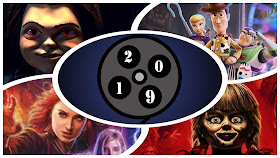"Have you ever danced with the devil in the pale moon light?"
This month marks the 30th anniversary of Tim Burton’s BATMAN.
Prior to 1989, people who lived outside of a comic book shop had very little exposure to the superhero known as the Dark Knight; a troubled, eccentric millionaire who dressed up as a bat every night and fought crime on his own. Most of the world’s exposure to the character had been the successful 1960’s TV show which was high on color, camp, and humor while aiming towards the kiddies. Tim Burton’s BATMAN changed all that. Drawing inspiration from the comic runs by Alan Moore and Frank Miller, Burton and his screenwriters went for a dark and gothic tone, while making the focus of the film two troubled individuals who served as an antithesis for each other; Batman and The Joker.
The early goings were not without controversy. The hiring of Tim Burton as director drew laughs from the cinema world, and the casting of Michael Keaton as Bruce Wayne/Batman drew even more. After all, Burton was known for his quirky and colorful style from his prior works such as PEE-WEE’S BIG ADVENTURE (1985) and BEETLEJUICE (1988). In fact, Burton’s BATMAN would not receive the green light to proceed until after the financial success of BEETLEJUICE…which starred Michael Keaton. Keaton at the time had a reputation as a comedic actor from his work in MR. MOM (1983) and NIGHT SHIFT (1982). Keaton would win the role over Mel Gibson, Kevin Costner, Charlie Sheen, Pierce Brosnan, Tom Selleck, and Bill Murray. After the announcement, 50,000 protest letters were sent to the Warner Bros. offices.
But by the time the Bat Signal went up, it would be Keaton and Burton who would be laughing last. BATMAN would be the second-highest grossing film that year, second only to the third INDIANA JONES film. It was the first film to earn $100 million in its first ten days of release. The success didn’t just belong to Burton and Keaton. Jack Nicholson turned in an electricperformance as The Joker, and the supporting cast which included Kim Basinger, Robert Wuhl, Billy Dee Williams, Michael Gough, and Jack Palance were all in top form. Nicholson would earn a Golden Globe nomination, and the Art Direction would win an Oscar. Danny Elfman contributed a memorable score. BATMAN would inspire the successful animated series, and paved the way for DC Comic’s long-running DC Animated Universe. The famed Bat-symbol, once stuck in dusty comic-shops, was suddenly seen on every other t-shirt and bumper-sticker.
*
Long-time readers and friends of Reel Speak know that this Blogger has never been the biggest fan of Tim Burton’s BATMAN. Characters have little to do, the plot is paper-thin, and the Joker’s plan to rule Gotham was ridiculous and never made sense even then. The film has so many goddamn dance numbers it may as well be a musical, and the one-note, one-dimensional storytelling approach would get lambasted in a new film today. But…there is still a lot to admire in Tim Burton’s BATMAN. The film looks and sounds great, the cast is outstanding, and it certainly looks like it belongs in a comic book universe. But the long-lasting legacy of BATMAN is that to the wide-world, it put the colorful 1960’s TV version far away in the Batmobile’s rear-view mirror…and more importantly, it put the Dark back in the Knight. Thirty years on, Tim Burton’s BATMAN has a lot of devoted fans and consider it to be the definitive Bat on film.
“I’m Batman!”


















